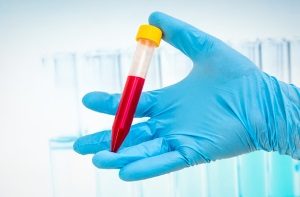 The John Goodman DUI manslaughter case is one of the most infamous cases to grace Palm Beach County, Florida. In February 2010, 23 year old UCF engineering graduate Scott Wilson was struck by a Bentley Continental convertible that ran a stop sign at 63 MPH and was driven by John Goodman, 46. Upon being struck, Wilson’s Hyundai Sonata was pushed into a canal where he drowned. John Goodman, founder of the Wellington Polo Club, was charged with DUI manslaughter, vehicular homicide, and fleeing the scene of an accident in May 2010. His BAC was found to be .177, over double the legal limit.
The John Goodman DUI manslaughter case is one of the most infamous cases to grace Palm Beach County, Florida. In February 2010, 23 year old UCF engineering graduate Scott Wilson was struck by a Bentley Continental convertible that ran a stop sign at 63 MPH and was driven by John Goodman, 46. Upon being struck, Wilson’s Hyundai Sonata was pushed into a canal where he drowned. John Goodman, founder of the Wellington Polo Club, was charged with DUI manslaughter, vehicular homicide, and fleeing the scene of an accident in May 2010. His BAC was found to be .177, over double the legal limit.
Nearly 2 years later in March 2012, he was convicted of DUI manslaughter and vehicular homicide with failure to render aid after a 5 hour deliberation amongst jurors. This occurred a second time in October 2014 after a retrial was ordered and granted by Chief Circuit Judge Jeffrey Colbath.
Both trials resulted in 16 year prison sentences and DUI manslaughter/ vehicular homicide and failure to render aid convictions. Following his second trial, Goodman’s council of lawyers requested to speak directly to a panel of three judges concerning one of the biggest challenges in his case — the blood sample obtained by law enforcement the night of the accident. This request was granted by the Fourth District Court of Appeals in West Palm Beach in September 2015.
Where Does That Leave The Case Now?
There were several issues regarding the blood sample that was taken in 2010. Appellate attorneys Margaret Good-Earnest and Cherry Grant submitted a lengthy Appellate Brief to the Fourth District Court — 136 pages when the limit for appeals is usually 50 pages. The Court granted them a request to submit a longer appeal but capped it at 100 pages. Goodman’s attorneys reasoned the blood sample should have been suppressed and requested retrial.
One of the main points raised concerned the blood sample results which the defense claimed was inaccurate. They claimed Judge Colbath proceeded incorrectly when he allowed the blood test results to be revealed to the jury. The results of Goodman’s blood test show he was well over the legal limit, but the test itself was conducted three hours after the incident occurred. Attorneys also claimed that there are problems with how the Florida Department of Law Enforcement tests blood and collects samples, and that Goodman’s constitutional rights were violated because police failed to attain a warrant before taking the blood sample.
Without that evidence, Goodman-Earnest claimed, “the state had virtually nothing since none of the witnesses who saw the appellant (Goodman) before the accident described him as impaired in any way.” The crux of the state’s case relied upon the blood test results; Goodman’s entire defense was that the high BAC was the result of chugging straight liquor after the accident in his “man cave,” or polo player’s barn office, where he went afterward to numb the pain of a fractured wrist and head trauma. This was rejected by the jury as it was also revealed he had been drinking at three Wellington bars prior to the accident.
The battle over the technicalities surrounding the blood evidence during his second trial ended in defeat in May 2016 when Judge Alan O. Forst claimed that Goodman’s argument against state rules for collecting and analyzing blood “focused on a problem that does not exist.” He wrote that Goodman’s appeal failed to demonstrate actual problems with Florida’s rules affecting the reliability of blood samples. If he had prevailed in this appeal, John Goodman would have received a third trial.


